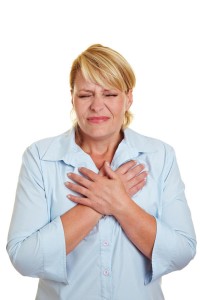Mastitis is a condition where the breast tissue of a woman is inflamed and painful. It is common among breastfeeding women, generally within the initial 3 months after giving birth.
In case it is caused by breastfeeding, it is called as lactation mastitis. As for the non-breastfeeding women, they often have the periductal form.
What are the causes?

Among breastfeeding women, mastitis is often triggered by the buildup of milk inside the breast or milk stasis. This can occur for various reasons such as:
- Infant was not able to properly attach to the breast during feeding
- Infrequent feeding or missing out on feeding
- Infant has difficulties or issues with sucking
In some instances, the accumulation of milk might become infected with bacteria which is called as infective mastitis.
Among non-breastfeeding women, the condition typically occurs once the breast is infected due to damage to the nipple such as a sore or cracked nipple or even from a nipple piercing.
Indications
Mastitis generally affects only one breast and the symptoms often settle quickly. The usual indications include:
- Reddened, swollen area on the breast that feels warm and sore to the touch
- Lump in the breast or area of hardness on the breast
- Burning sensation in the breast that might be continuous or only occurs while breastfeeding
- Drainage from the nipple that might be white or contain streaks of blood
In some cases, flu-like symptoms are present such as fever, chills and fatigue.
Management of mastitis
Mastitis is treated easily and most can recover quickly. There are also self-care measures that are beneficial such as:
- Adequate rest and keeping the body properly hydrated
- Over-the-counter pain medications to lessen any pain or fever
- Avoid wearing tight or constricted clothing including bras until the symptoms settle
- If breastfeeding, continue to do so and make sure that the infant is properly attached to the breast
Remember that breastfeeding the child even if mastitis is present is not harmful and can even help in improving the symptoms.
It is also beneficial to feed more frequently than normal and express any leftover milk after feeding and express milk in between sessions.
Among non-breastfeeding women and breastfeeding women with a possible infection, a course of oral antibiotics is given to control the infection.
